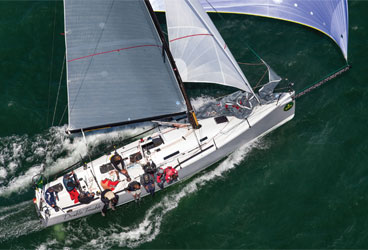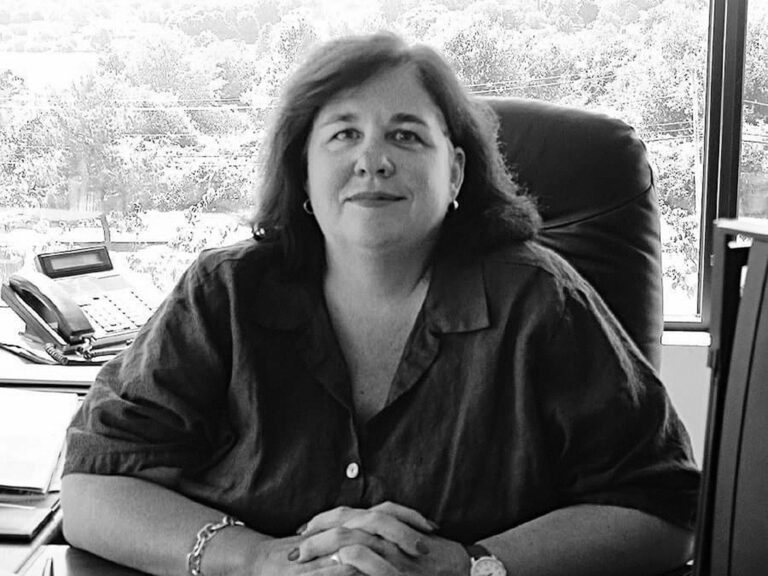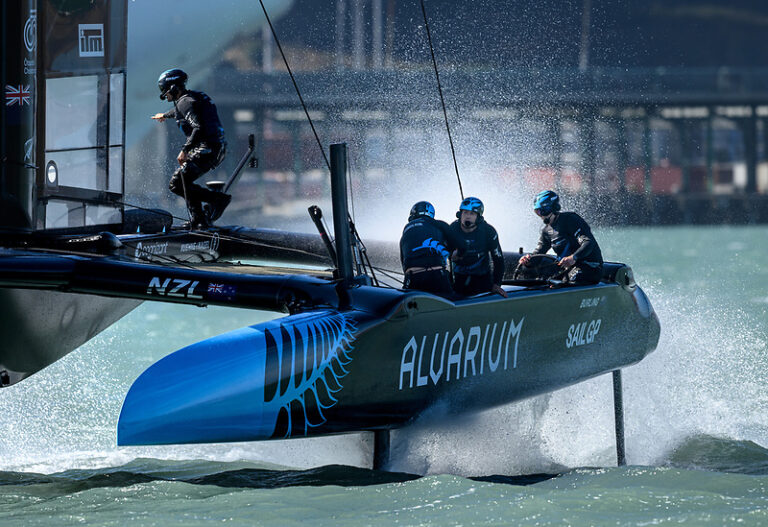
Double Trouble
Four years ago, Peter Krueger and Andy Costello, two former rivals who grew tired of racing against each other, pooled their resources and forged a partnership with the J/125 Double Trouble. Krueger, of Reno, Nev., and Costello, of San Francisco, have been optimizing it ever since. The result has been a string of standout performances offshore and around the Bay Area buoys; in particular, the team has won back-to-back IRC titles at the Rolex Big Boat Series. The pair alternates on the helm: In 2011, Costello won it decisively, and in 2012, the spoils went to Krueger.
What have been the most important optimizations you’ve made to the boat since you’ve owned it?
[Costello] The most important have been the sail designs. They’re not off-the-shelf designs, and we’ve worked with the designers to tweak the sail shapes for the boat’s characteristics. The boat has an upgraded rudder, deeper and higher aspect, and we’ve lightened it everywhere—there’s not a lot of original hardware on the deck. For the Big Boat Series, we went with 3Di for the main and got a No. 2 that was perfect for the regatta: We were able to carry it much higher into the wind range.
The spinnaker shapes have been optimized through the years, and we’ve found that the higher the wind range, the better the boat does with smaller kites. When you have a smaller sail with a flatter shape, it allows the boat to get up on a plane earlier. When the boat first came out, people thought you had to sail it at 160 degrees true wind angle, but in anything over 15 knots, you’re at 142 degrees and planing. By sailing it a new way we’ve found out how fast the boat really is. We sail it similar to a Melges 32: main in, vang off, and high, unless it’s below planing conditions.
What have you found are the sweet spots for this boat?
[Krueger] We sail it flat upwind. I had Jeff Madrigali on the boat as a tactician, and he was working us hard on boatspeed and angle. For this regatta, it was a case of having no rail in the water. We sail with a heel angle of maybe 15 degrees at most. Throughout the regatta, I was looking at the leeward side to see where the rail was relative to the water, and sensing how much pressure I had on my bottom—by the seat of my pants.
[Costello] The boat has a spot where the helm goes neutral, and when you’re in the groove, it’s not loaded at all. It’s a spot where the boat rumbles and is super flat. It doesn’t feel as powered up as it should be, but it’s higher and faster.
What else did you work on?
[Costello] During the practice, we worked on crew weight placement downwind. We played a lot with it in different conditions. One takeaway is that you have to do a lot of sailing in different conditions: listen to the water coming off the transom, look at the knuckle, and take mental notes to get the boat at its optimum angles.
You said you sail it like a Melges 32; what does that mean?
[Costello] In 20 to 30 knots, we sail it as high as the helmsman can without stalling the rudder, which ranges from 140 to 145 degrees [TWA]. We’ve got the crew piled into the back, hiking hard, and even the bowman back behind the helmsman. We’re working vang, mainsheet, and spinnaker all at the same time so the boat is lit up and unloaded.
[Krueger] The helmsman has to be driving the boat all the time, which is a new dynamic for me. I was sailing it constantly to keep it up on the step. I drive it, and the trimmer has to match what I’m doing, not the other way around.
What’s your tactical advice, gleaned from being the fast boat in the fleet?
[Costello] When you’re [the slow boat] racing against faster boats, all you do is suck air off the line. As the fast boat you can pick your lanes and work on people behind you.









